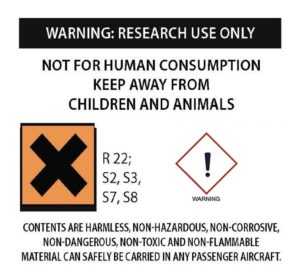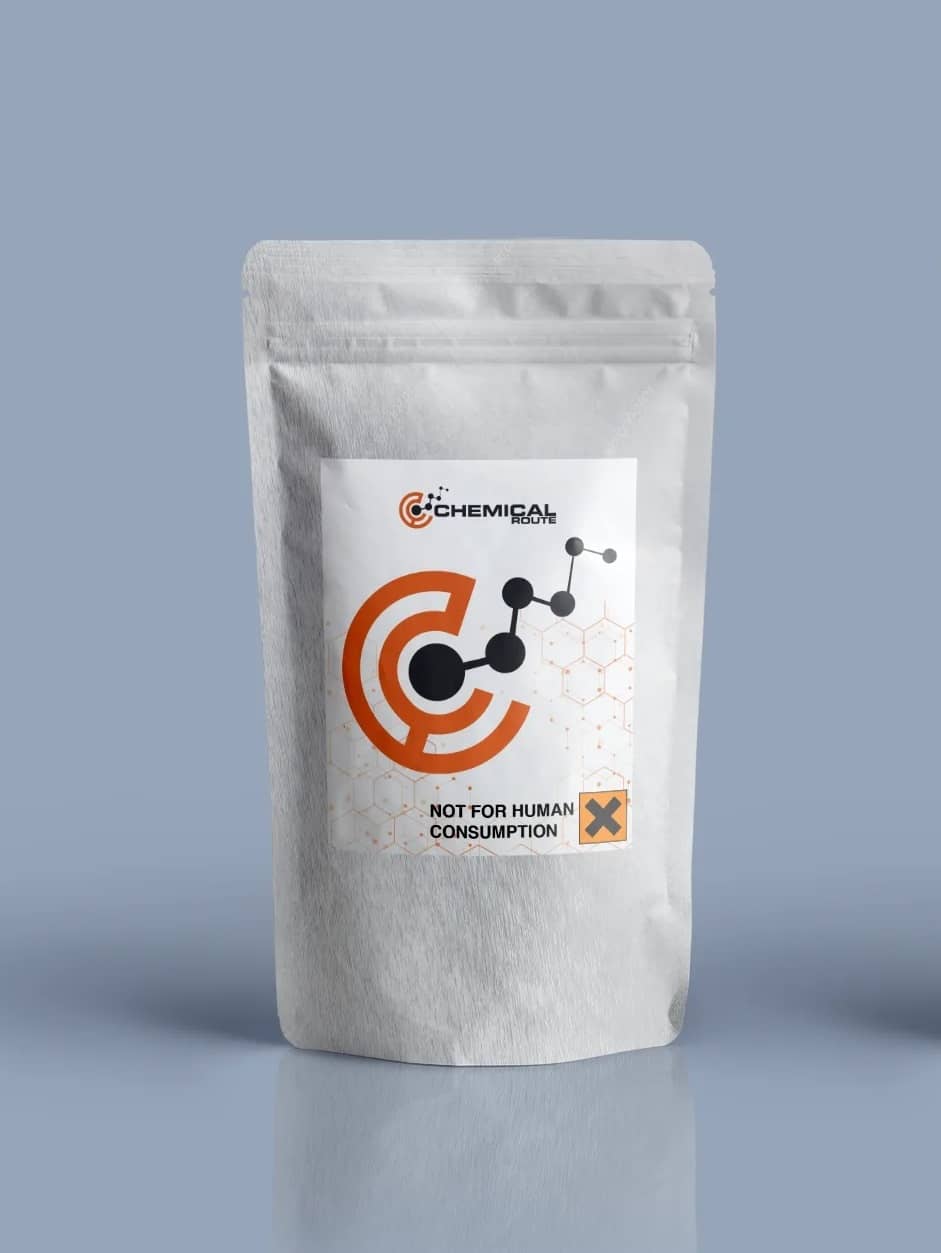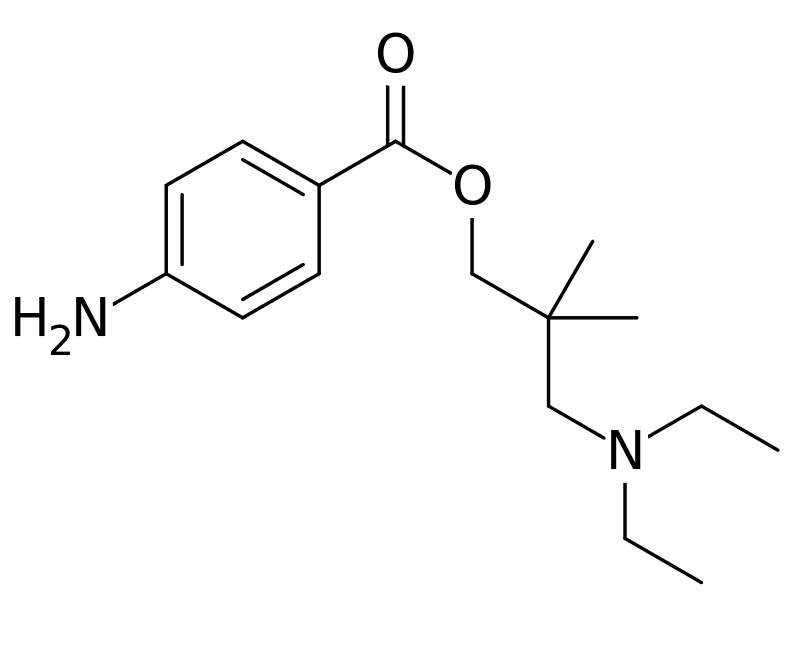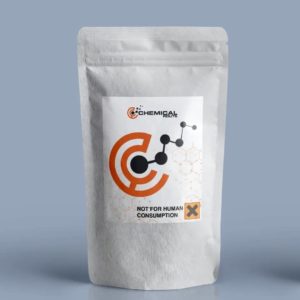Description
Dimethocaine, DMC, Larocaine
Product information
IUPAC-name (3-diethylamino-2,2-dimethylpropyl)-4-aminobenzoate
Synonyms DMC, larocaine
Formal name 3-
Cas number 94-15-5
Formula C16H26N2O2
Molar Mass 278.396 g·mol−1
Purity 98.0 % min.
Formulation Powder
Solubility
- DMF: 20 mg/ml
- DMSO: 14 mg/ml
- Ethanol: 16 mg/ml
- PBS (pH 7.2): 10 mg/ml
Dimethocaine which is also known as DMC, larocaine, is considered as an anesthetic that, on account of its closeness in real life to cocaine, has potential for misuse. Dimethocaine is a compound that has a stimulatory effect. This compound totally restrains dopamine uptake in rats striatal synaptosomes with an IC50 worth of 1.2 µM tantamount to that of cocaine (IC50 = 0.7 µM) accordingly, dimethocaine portion conditionally fill in for cocaine in drug separation tests in rats and rhesus monkeys
Dimethocaine is a 4-aminobenzoic acid that resembles the active substance of procaine. It is commonly used as a white powder. It was originally developed by the Hoffmann-La Roche Company in 1930 as a local anesthetic. During the 1930s, dimethocaine was commonly used in the US as a local anesthesia for cosmetic surgery and other procedures. However, it was discontinued during the 1940s due to its psychoactive effects.
Portions of cocaine and other local anesthetics such as dimethocaine can inhibit the uptake of dopamine by blocking the dopamine transporters. This impairs the movement and cognition of the neurotransmitter.
Due to the properties of drugs such as dimethocaine, which are known to inhibit the central nervous system’s dopamine uptake, they can create a euphoric effect. In vitro and in vivo measurements of the activity of dimethocaine in the dopaminergic reuptake inhibitor paradigm revealed its potent and effective effects.
However, dimethocaine is considered in some countries as a legal cocaine replacement and is even listed by the European Monitoring Centre for Drugs and Drug Addiction (EMCDDA) under the category “synthetic cocaine derivatives”
The toxicological and physiological properties of this compound has not been analyzed. Usage of this Chemical should be for research and forensic purposes only.
WARNING This product is not for human or veterinary use.

This product is only available to persons of 21 years old and above.
Hazard statement(s)
| H302 | Harmful if swallowed |
| H315 | Causes skin irritation |
| H319 | Causes serious eye irritation |
| H332 | Harmful if inhaled |
| H335 | cause respiratory irritation |
| H336 | cause drowsiness or dizziness |
| Precautionary statement(s) | |
| P264 | Wash hands thoroughly after handling |
| P280 | protective gloves/protective clothing/eye protection/face protection |
| P305 + P351 + P338 | IF IN EYES: Rinse cautiously with for several minutes. Remove contact lenses, if present and easy to do. Continue rinsing. |
| P337 + P313 | If eye irritation persists: Get medical advice/attention |
| P261 | Avoid breathing dust/ fume/ gas/ mist/ vapors/ spray |
| P271 | Use only outdoors or in a well-ventilated area |
| P304 + P340 | IF INHALED: Remove victim to fresh air and keep at rest in a position comfortable for breathing |
| P312 | Call a POISON CENTER or doctor/physician if you feel unwell |
| P403 + P233 | Store in a well-ventilated place. Keep container tightly closed |
| P405 | Store locked up |
| P501 | Dispose of contents/container to a licensed disposal company |




Reviews
There are no reviews yet.